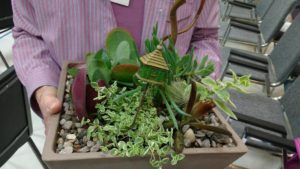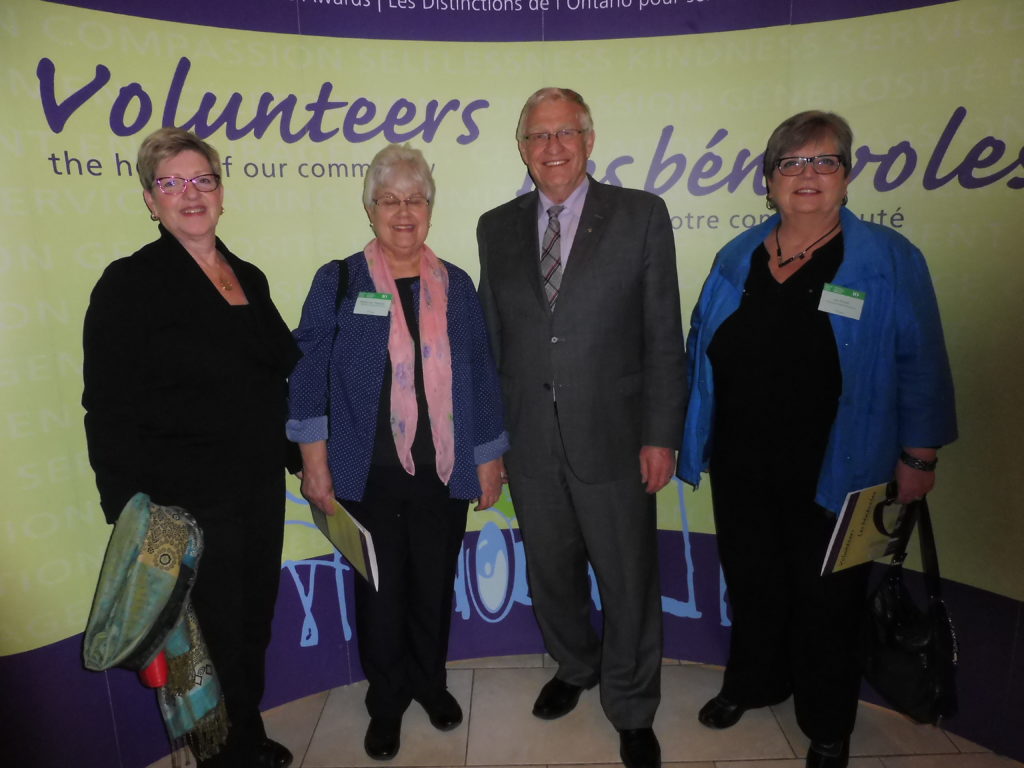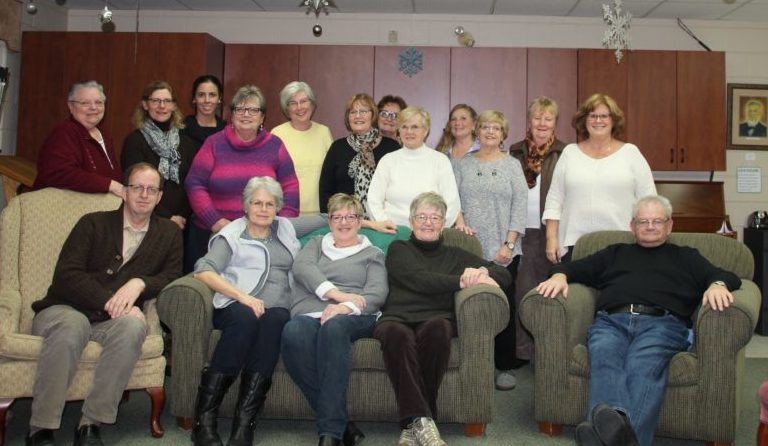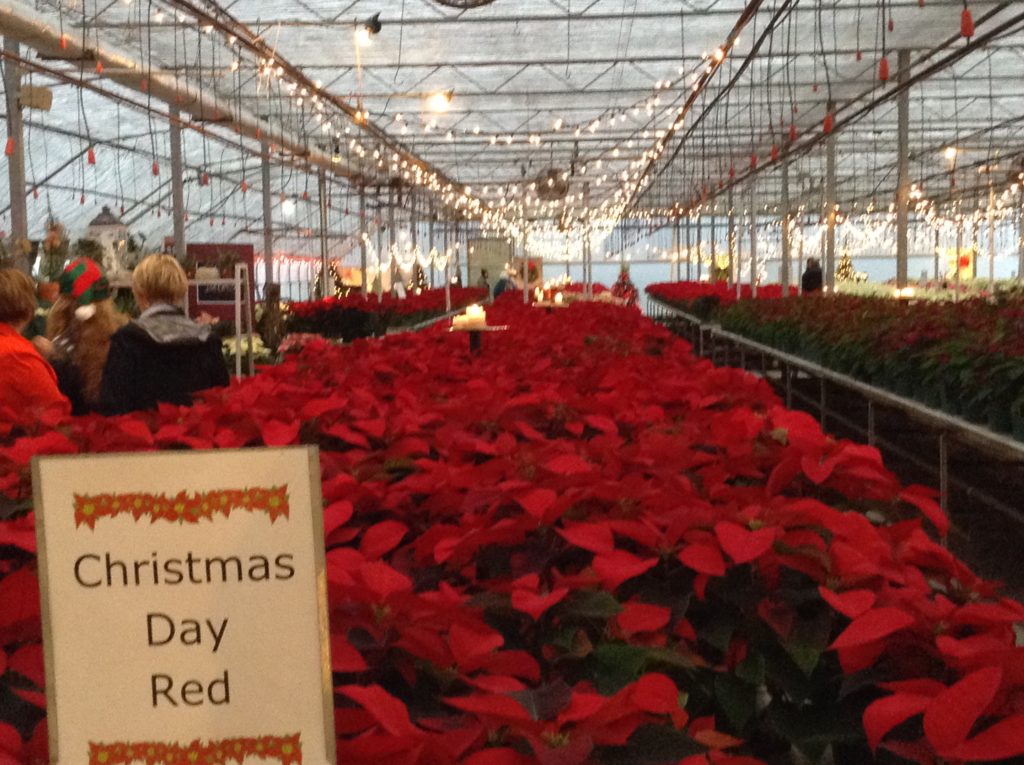It’s Still Just Dirt, The Tillsonburg News – May 2017
by Angela Lassam
We have lost many trees due to storm damage and disease and we should consider replacing them. The next question is, “What do we plant?” and “What do we expect from that tree?”.
There are many attributes to trees. They provide shade to keep our homes cool in summer and protection from winds in winter. The roots absorb water to save runoff during storms. They naturally clean the air by absorbing pollutants and convert CO2 into oxygen (one acre of trees equates to 26,000 miles driving or oxygen for 18 people). Trees help erosion when the roots hold soil in place. The roots also act as filters for water before it reaches our natural streams and drinking water.
There are benefits we cannot see but are all around us daily. They tell us the seasons and weather. Trees in towns can create a focal point, a meeting place, muffle sounds, reduce glare, and will encourage new businesses by creating a more pleasant community. People seem to be happier and more serene when trees are around them. Trees can cool a city by 10 per cent and also add some humidity by evaporation.
We are fortunate to live within the Carolinian Zone and have the ability to grow deciduous trees that will thrive naturally. Backus Woods is a great example and there are many of the species to be found there. We also have local nurseries who specialize in these trees.
I have selected a few to enlarge upon:
Tulip tree – also called wild magnolia is a hardwood with large unusual shaped leaves and a cupped green/orange open flower.
Sycamore – also called Buttonball has an unusual camouflage bark and the fruit is an inch size ball. Leaves are similar to a Maple tree.
Honey Locust – an open tree with leaves that are pinnate and the fruit is a long pod. The natural tree has long thorns but trees in nurseries are grafted or hybridized to eliminate the thorns.
Eastern Cottonwood – also known as necklace poplar is a fast growing tree (can grow 6’ a year) and can be used as a windbreak and for shade. Wildlife like the twigs and bark. This tree has various uses in the cosmetic industry (ie lip balm) also good for building canoes and other wood products. It can be a bad choice for people with allergies.
There are some diseases which will decimate trees but some are only cosmetic. Most diseases are hard on the tree but it is the following fungus that will kill it.
Magnolia scale is a disease where large insects kill entire branches by feeding on the tree sap. This looks like mold but it is scale waste (honeydew). The only thing to do is to remove the limb to keep the tree airy.
Tent caterpillar is the larvae of moths and butterflies. The web acts as protection whilst they are eating. Although it is unsightly it is not a killer.
Tar spot is a fungus which is very noticeable on Maple trees but it also affects many others. It is advisable to rake and burn leaves. Do not compost them.
Asian long-horned beetle tunnels into trees making 20mm holes. Then the tree becomes weakened and gets fungal growth and ultimately dies.
The Emerald ash borer is an insect that has eradicated almost all the ash trees in Ontario. The insect feeds off the inner bark cutting the water supply. It may take up to 2 years to detect cracked bark and small holes. In the meantime the foliage will become smaller.
There has been a breakthrough in research in Canada. The Great Lakes Forestry in Sault St Marie have discovered a “made in Canada” parasitic wasp (Tetrastichus) that they are releasing in various locations. The wasp inserts its eggs through the bark onto the borer grub to kill it. It is selective and will only eat these grubs. This wasp is similar to the natural enemy wasp found in China where the borer originated. It is smaller than an ant, and will not bite or sting humans.
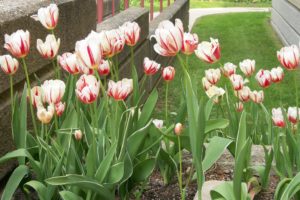
Some of the Canada 150 Tulips planted by Horticultural Society members at various gardens in the community.
The recent Garden Auction held by the Tillsonburg Horticultural Society was once again an outstanding success. This will allow the Society to brighten our town and allows us to do the many things that all the members enjoy. Thanks go out to all who contributed or participated to make this a tremendous day. Special thanks go to all the donors – a full list can be found on the website www.tillsonburghorticultural.ca.
Please remember to plant some wildflower seeds for the bees and butterflies. They need our help. Many Monarch butterflies died in Mexico this past winter.
The next meeting for the Tillsonburg Horticultural Society is on Tuesday June 6th @ 7.30pm in the Seniors Centre Auditorium, Tillsonburg Community Complex. Nadia Cavallin, Field Botanist from the Royal Botanical Gardens will present Wild Flowers of Southwestern Ontario just in time for a more knowledgeable country walk. Non-members welcome, come and make some new friends. Membership $15 per year.
For information about the Tillsonburg Horticultural Society visit tillsonburghorticultural.ca online. Also find us on Facebook – Tillsonburg Horticultural.
